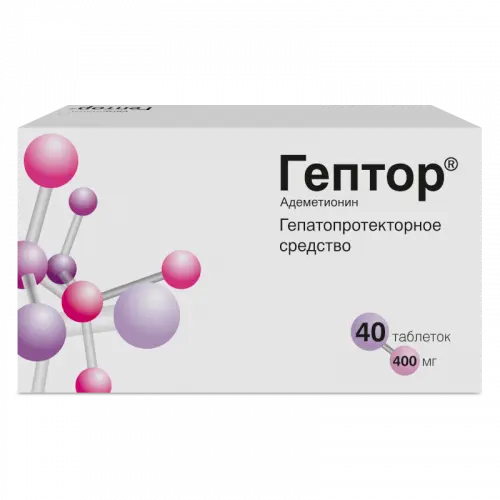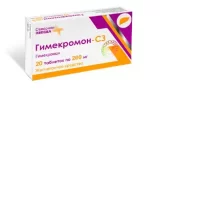Description
Urcevel Pharmacodynamics
Hepatoprotective drug, has a choleretic effect. Reduces cholesterol synthesis in the liver, its absorption in the intestine and its concentration in bile, increases cholesterol solubility in the biliary system, stimulates bile formation and excretion. It decreases bile lithogenicity and increases bile acids content; it causes intensification of gastric and pancreatic secretion, increases lipase activity and has hypoglycemic effect. Causes partial or complete dissolution of cholesterol stones in enteral administration, reduces bile saturation with cholesterol, which promotes mobilization of cholesterol from gallstones. It has an immunomodulatory effect, affects immunological reactions in the liver: it reduces the expression of some antigens on the membrane of hepatocytes, affects the number of T-lymphocytes, interleukin-2 formation, reduces the number of eosinophils.
Pediatric population.
Cystic fibrosis (cystic fibrosis).
According to clinical reports, there is a long history (up to 10 years or more) of treatment with ursodeoxycholic acid in pediatric patients with hepatobiliary disease associated with cystic fibrosis (CFAHD). There is evidence that therapy with ursodeoxycholic acid can decrease bile duct proliferation, slow down the development of lesions detected by histological examination, and even promote reversal of hepatobiliary changes if therapy is started at early stages of CFAHD. In order to optimize the effectiveness of treatment, ursodeoxycholic acid therapy should be started as early as possible after the diagnosis of CFAHD.
Indications
Cholesterol gallstones dissolution, biliary reflux gastritis, primary biliary cirrhosis in the absence of decompensation signs, chronic hepatitis of various genesis, primary sclerosing cholangitis, cystic fibrosis, nonalcoholic steatohepatitis, alcoholic liver disease, biliary dyskinesia.
Contraindications
X-ray-positive (high calcium) gallstones; impaired gallbladder contractility, obstruction of biliary tracts (blockage of common bile duct or vesicular duct), frequent episodes of gall cramps; acute inflammatory diseases of gallbladder and bile ducts; decompensated liver cirrhosis; marked hepatic and/or renal insufficiency, hypersensitivity to the drug components or other bile acids.
Pediatric population.
Unsuccessfully performed portoenterostomy or cases of absence of restoration of normal bile flow in children with biliary tract atresia.
Ursodeoxycholic acid has no age restrictions for use, but in children under 3 years of age, it is recommended to use ursodeoxycholic acid in suspension, as it may be difficult to swallow capsules.
Use during pregnancy and breastfeeding
According to animal studies, ursodeoxycholic acid has no effect on fertility. There are no data on the effect of treatment with ursodeoxycholic acid on fertility in humans.
Data on the use of ursodeoxycholic acid in pregnant women are limited or absent. Animal studies have shown reproductive toxicity in early pregnancy. Ursodeoxycholic acid should not be used during pregnancy unless clearly necessary. The use of ursodeoxycholic acid by women of childbearing potential is possible only if they use reliable methods of contraception. It is recommended to use non-hormonal contraceptives or oral contraceptives with low estrogen content. However, patients taking ursodeoxycholic acid to dissolve gallstones should use effective non-hormonal contraceptives, as hormonal oral contraceptives may increase gallstone formation. The possibility of pregnancy should be ruled out before starting treatment.
According to several documented cases, the level of ursodeoxycholic acid in breast milk in women is very low and therefore adverse reactions in breastfed children are not expected.
How to use and dosages
- Children and adults with a body weight less than 47 kg are recommended to use ursodeoxycholic acid in suspension.
- Dissolution of cholesterol gallstones
- The recommended dose is 10 mg of ursodeoxycholic acid per 1 kg of body weight per day, which corresponds to:
- Body weight, kg Number of capsules, pcs.
- Up to 60 2
- 61-80 3
- 81-100 4
- Over 100 5
- The drug should be taken daily in the evening before going to bed (capsules are not chewed), drinking plenty of fluids.
- Duration of treatment 6-12 months. For the prevention of recurrent cholelithiasis is recommended to take the drug for several months after the dissolution of stones.
- Treatment of biliary reflux gastritis
- 1 capsule of ursodeoxycholic acid daily in the evening before going to bed, without chewing and with a small amount of water.
- The course of treatment from 10-14 days to 6 months, if necessary? up to 2 years.
- Treatment of primary biliary cirrhosis
- Daily dose depends on body weight and is from 3 to 7 capsules (about 14 ± 2 mg of ursodeoxycholic acid per 1 kg of body weight).
- During the first 3 months of treatment the intake of ursodeoxycholic acid should be divided into several intakes during the day. After improvement of hepatic parameters the daily dose of the drug can be taken 1 time in the evening.
- The following regimen of administration is recommended:
- 250 mg capsules.
- Body weight, kg First 3 months of treatment Afterwards
- Morning Afternoon Evening (once daily)
- 47-62 1 1 1 3
- 63-78 1 1 2 4
- 79-93 1 2 2 5
- 94-109 2 2 2 6
- Above 110 2 2 3 7
- Capsules should be taken regularly, without chewing, with a small amount of liquid.
- The use of ursodeoxycholic acid for treatment of primary biliary cirrhosis may be continued indefinitely.
- In patients with primary biliary cirrhosis in rare cases clinical symptoms may worsen at the beginning of treatment, for example, itching may increase. In this case, the treatment should be continued by taking 1 capsule daily, then the dosage should be gradually increased, increasing the daily dose weekly by 1 capsule, until the recommended dosage regimen is reached again.
- Symptomatic treatment of chronic hepatitis of different genesis daily dose 10-15 mg/kg in 2-3 doses. Duration of treatment ? 6-12 months and longer.
- Primary sclerosing cholangitis ? daily dose is 12-15 mg/kg; if necessary, the dose can be increased to 20-30 mg/kg in 2-3 doses. Duration of therapy ranges from 6 months to several years (see section “Special indications”).
- Cystic fibrosis (cystic fibrosis) ? daily dose is 20 mg/kg/day in 2-3 doses, with further increase to 30 mg/kg/day if necessary.
- Body weight (kg) Daily dose (mg/kg body weight) Morning Afternoon Evening
- 20-29 17-25 1 — 1
- 30-39 19-25 1 1 1
- 40-49 20-25 1 1 2
- 50-59 21-25 1 2 2
- 60-69 22-25 2 2 2
- 70-79 22-25 2 2 3
- 80-89 22-25 2 3 3
- 90-99 23-25 3 3 3
- 100-109 23-25 3 3 4
- > 110 3 4 4
- Non-alcoholic steatohepatitis ? average daily dose is 10-15 mg/kg in 2-3 doses. Duration of therapy is 6-12 months or more.
- Alcoholic liver disease ? average daily dose is 10-15 mg/kg in 2-3 doses. Duration of therapy is 6-12 months or more.
- Biliary dyskinesia – average daily dose is 10 mg/kg in 2 intakes during 2 weeks to 2 months. If necessary, the course of treatment is recommended to be repeated.





